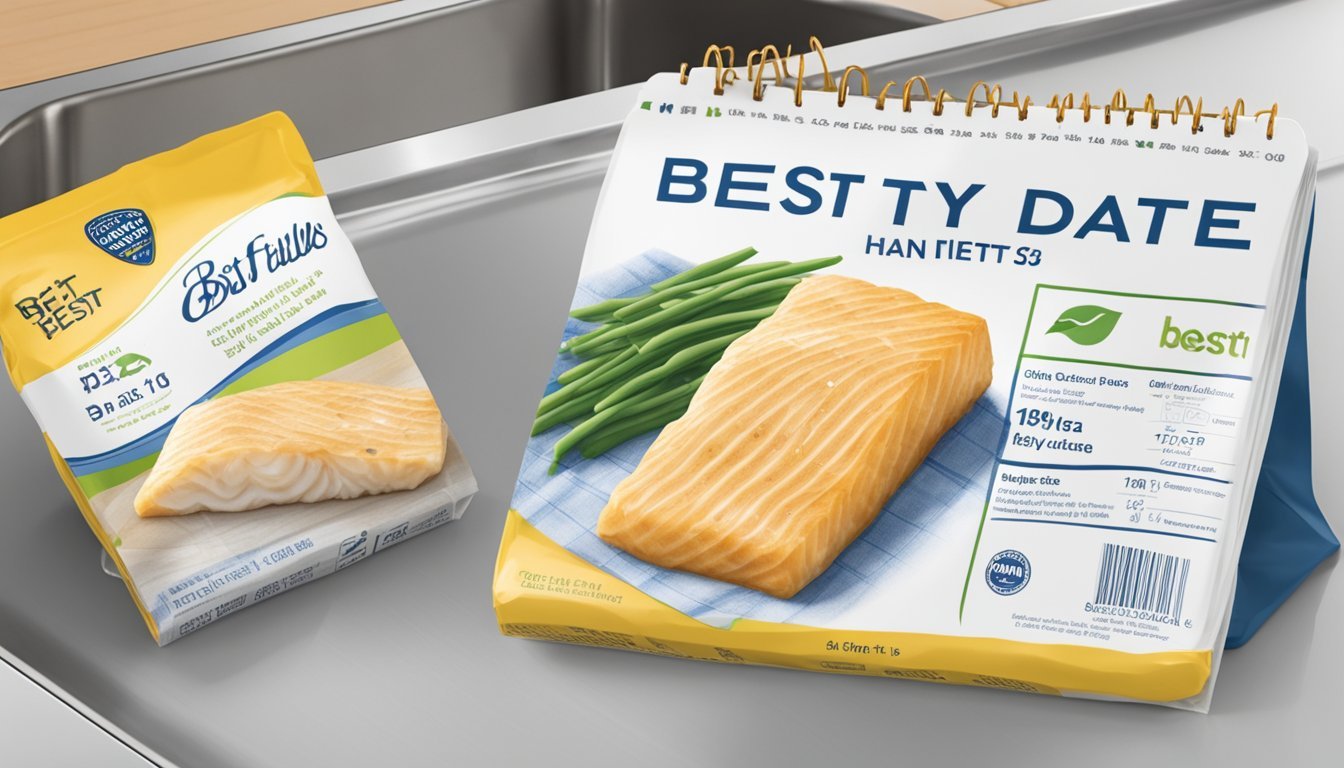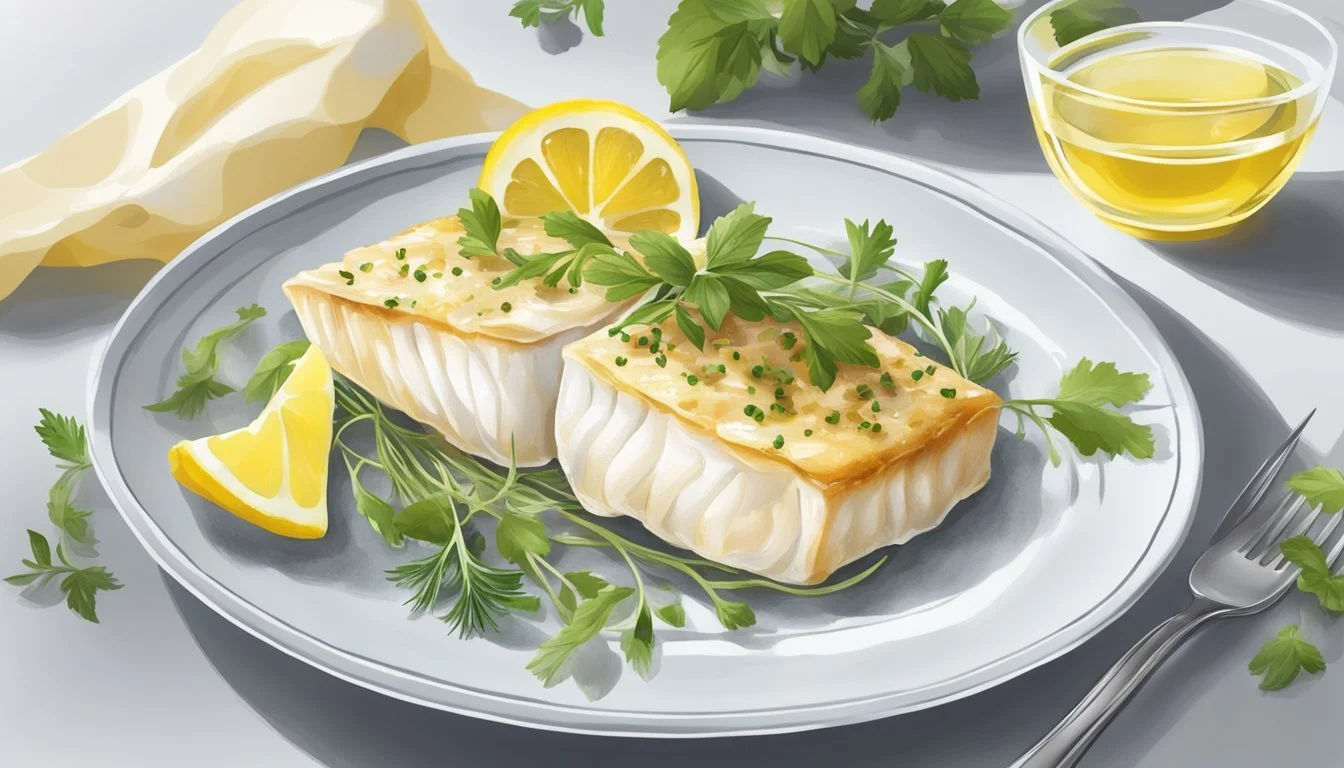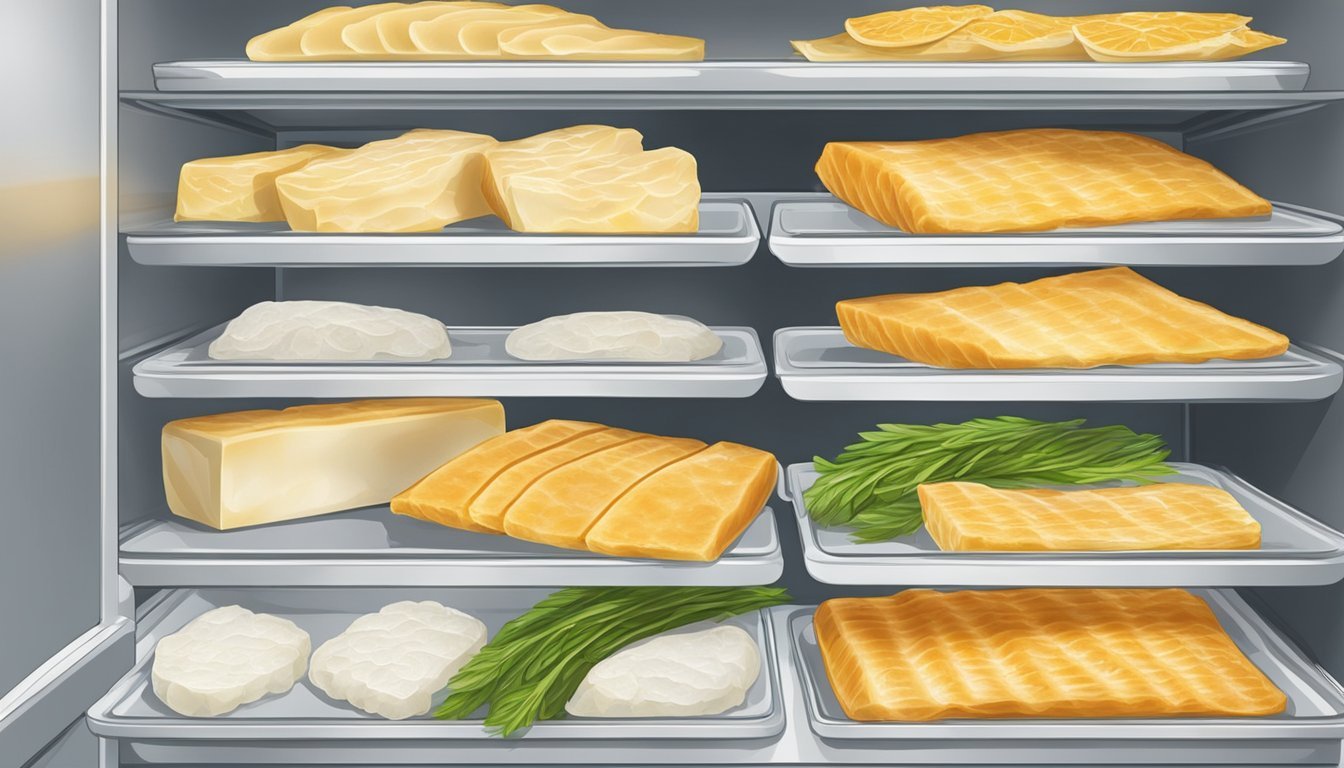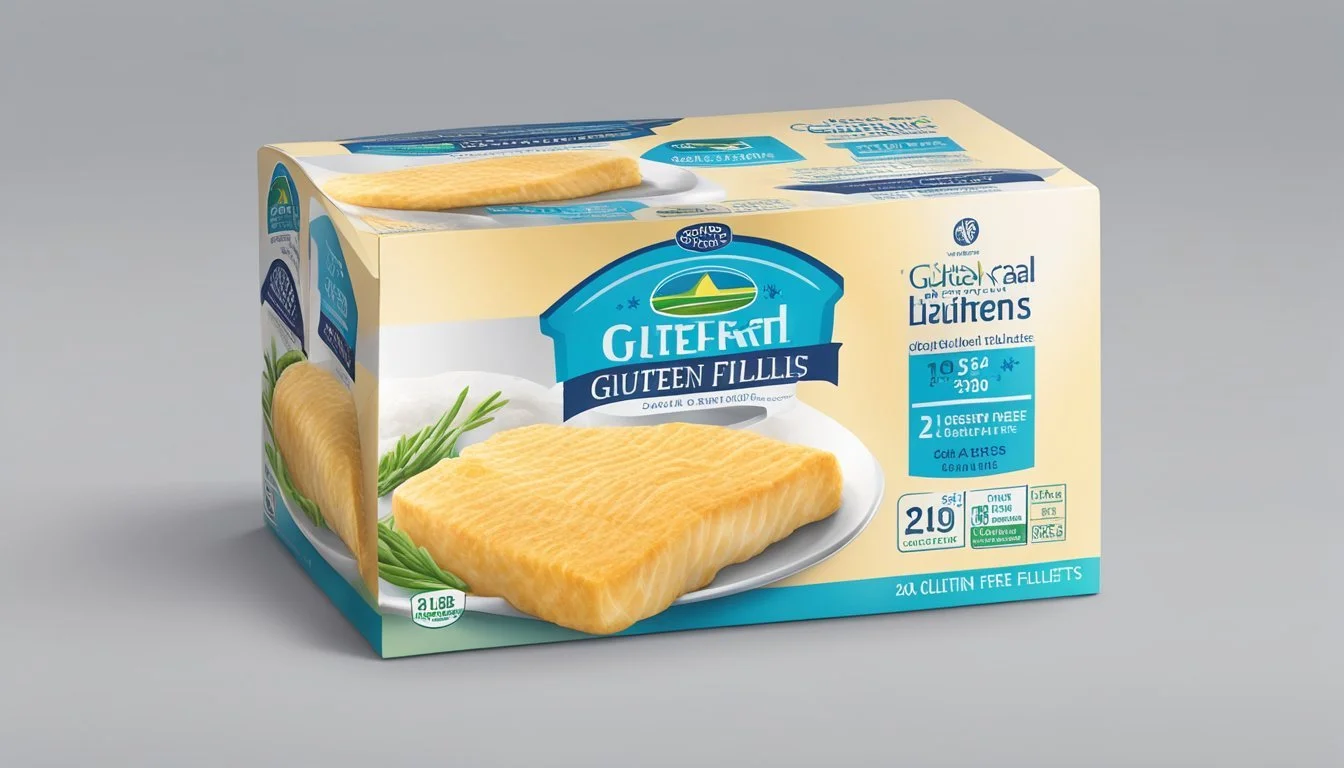How Long Do Gluten-Free Cod Fillets Last?
Storage Tips and Shelf Life
Gluten-free cod fillets can be a delightful and healthy option for many meals, but knowing how long they last is crucial for maintaining their quality and safety. Properly stored, raw gluten-free cod fillets last for 1-2 days in the refrigerator. Once cooked, these fillets can be safely consumed within 3-4 days when stored in an airtight container in the fridge.
Understanding the shelf life of gluten-free cod fillets helps in planning meals and minimizing food waste. For extended preservation, freezing is an excellent method. Frozen cod fillets can maintain their best quality for up to 6 months when stored properly in airtight, freezer-safe packaging.
By ensuring optimal storage conditions, you can enjoy your gluten-free cod dishes at their freshest and most flavorful. This guide will provide you with detailed tips and tricks to maximize the shelf life of your gluten-free cod fillets, helping you make informed decisions in the kitchen.
Understanding Gluten-Free Cod Fillets
Gluten-free cod fillets are a nutritious and versatile option for those following a gluten-free diet. This section explores the characteristics of cod, the health benefits of consuming gluten-free fish, and various gluten-free coating alternatives.
Characteristics of Cod
Cod is a white fish known for its mild flavor and flaky texture. It is a lean source of protein, making it ideal for health-conscious individuals. Cod fillets are often thick and can weigh around 6-7 oz. per piece. Fresh cod should have firm, translucent flesh and a clean, ocean-like smell. It is typically caught in cold waters, which contributes to its distinctive taste and nutrient profile.
Health Benefits of Gluten-Free Fish
Gluten-free cod fillets offer numerous health benefits. Cod is rich in protein and low in fat, making it suitable for various diets like low-carb and keto. It is also a good source of vitamins and minerals, including vitamin B12, iodine, and selenium. These nutrients support metabolism, thyroid function, and immune health. Additionally, the absence of gluten makes cod accessible to those with gluten intolerance or celiac disease, ensuring a healthy, enjoyable meal without digestive concerns.
Gluten-Free Coating Alternatives
Several gluten-free alternatives can be used to coat cod fillets. Almond flour is a popular choice, providing a nutty flavor and crunchy texture. Another option is gluten-free panko, which mimics the traditional breadcrumb coating without gluten. Seasonings such as garlic powder, chili powder, and herbs can be added to these coatings to enhance the taste. Using these alternatives allows for crispy, flavorful cod dishes that are safe for gluten-free diets.
Preparation of Gluten-Free Cod Fillets
Preparing gluten-free cod fillets involves selecting the freshest ingredients, crafting a flavorful coating, and utilizing proper baking techniques to ensure a tasty and allergen-free meal.
Selecting Quality Ingredients
Choosing fresh, high-quality ingredients is crucial. Cod fillets should be firm and have a mild scent of the sea. Avoid fillets with a fishy odor or discolored flesh.
For the coating, opt for certified gluten-free breadcrumbs or panko. Breadcrumbs from rice or quinoa work well. Fresh herbs like parsley add flavor without gluten. Ensure that other ingredients like spices (garlic powder, onion powder, and paprika) are gluten-free, as cross-contamination may occur.
Creating a Savory Gluten-Free Coating
Creating the perfect coating starts with the flour mixture. Use gluten-free alternatives such as almond flour or potato starch. This helps create a crisp exterior.
An egg mixture acts as a binding agent. Whisk eggs seasoned with salt and pepper. For added flavor, include a dash of lemon juice or hot sauce. After dipping the fillets in the egg mixture, coat them in the seasoned gluten-free breadcrumbs. Ensure an even coating for all fillets.
Baking Gluten-Free Cod Fillets
Preheat the oven to 200C/390F. Place the coated cod fillets on a lined baking tray. Drizzle with olive oil to enhance crispiness and prevent sticking.
Bake on the middle rack for about 10-12 minutes, or until the cod flakes easily with a fork. For additional flavor, some cooks prefer to sprinkle the fillets with a bit of paprika before baking. If a golden crust is desired, broil for the last 1-2 minutes of cooking, keeping a close watch to avoid burning.
Storing Gluten-Free Cod Fillets
Proper storage of gluten-free cod fillets ensures freshness and safety. Understanding the best practices for refrigeration and freezing will extend the shelf life of your cod fillets, whether cooked or raw.
Refrigerating Cooked Fillets
Cooked gluten-free cod fillets should be stored in the refrigerator at 40°F (4°C) or lower. Use airtight containers or wrap the fillets tightly in parchment paper followed by plastic wrap.
Consume refrigerated fillets within 3-4 days to maintain quality. When reheating, ensure the internal temperature reaches 165°F (74°C) to kill any bacteria.
Proper covering prevents odors from other foods from affecting the fish. Always place the fillets on the top shelf, where temperatures are more stable.
Freezing and Thawing Practices
For long-term storage, freeze gluten-free cod fillets. Place them in vacuum-sealed bags or wrap them tightly in parchment paper and heavy-duty aluminum foil to prevent freezer burn.
At temperatures of 0°F (-18°C) or below, frozen cod can last up to 6 months. Label each package with the freezing date for easy tracking.
To thaw, transfer frozen fillets to the refrigerator and allow them to thaw overnight. Never thaw fish on the counter to avoid bacterial growth. If in a hurry, place the fish in a sealed plastic bag and immerse in cold water.
Serving Suggestions and Pairings
To create a balanced meal with gluten-free cod fillets, consider pairing the dish with complementary sides and enhancing its flavors with suitable sauces and spices. These suggestions aim to elevate the taste and dining experience.
Complementary Side Dishes
Pairing gluten-free cod fillets with fresh vegetables and potatoes creates a hearty, balanced meal. Roasted potatoes or a light salad with lemon slices add vibrant flavors. Steamed rice or quinoa can also complement the succulent fish.
For an easy weeknight dinner, serve the fillets alongside crispy baked vegetables, lightly seasoned with salt, pepper, and herbs. A simple tomato and onion salad with a squeeze of lemon juice offers a fresh contrast.
Enhancing Flavor with Sauces and Spices
Elevate the taste of cod fillets with the right sauces and spices. A garlic lemon butter sauce can add richness. Fresh dill or parsley sprinkled over the fish enhances its flavor profile. Herb blends featuring thyme, rosemary, and basil can be used to season both the fish and side dishes.
For those who enjoy a bit of heat, a mix of cayenne pepper, chili powder, and garlic powder adds a spicy kick. Lemon juice and lemon zest provide a tangy flavor that complements the cod’s mild taste.
Nutritional Information and Dietary Considerations
Gluten-free cod fillets are not only a healthy choice but also support various dietary preferences, including keto and dairy-free diets. Below, essential aspects such as caloric and macronutrient content are explored.
Caloric and Macronutrient Profile
Cod fillets are prized for their lean protein content. A typical 3-ounce serving of baked cod contains approximately 90 calories, making it an ideal option for those mindful of their caloric intake.
Macronutrients:
Protein: Cod is rich in protein, providing around 20 grams per serving. This promotes muscle maintenance and overall health.
Fat: These fillets are low in fat, with about 1 gram per serving. This includes beneficial omega-3 fatty acids, which are important for heart health.
Carbohydrates: Cod is naturally low in carbohydrates, containing less than 1 gram per serving, making it suitable for keto and low-carb diets.
Dietary Considerations:
Healthy: Cod is a source of vitamins B6, B12, and niacin.
Keto and Low Carb: The minimal carbohydrate content supports keto dietary requirements.
Dairy-Free: Cod itself is dairy-free, suitable for those with lactose intolerance or dairy allergies.
These attributes make gluten-free cod fillets a versatile and nutritious choice for various diets.
Cooking Tips and Techniques
Baking gluten-free cod fillets ensures a delicious, flaky texture while keeping them crispy and flavorful. These cooking tips will help achieve a perfect dish every time, focusing on texture and doneness.
Achieving a Crispy Texture
One way to achieve a crispy texture is by using panko breadcrumbs. Seasoned gluten-free panko can be mixed with ingredients like salt, black pepper, dried parsley, and fresh lemon juice. Afterward, press this mixture onto the tops of the cod fillets.
Position the fillets on a wire rack over a baking sheet to allow the hot air to circulate, ensuring even crispiness.
For an extra layer of flavor, brush the fillets with avocado oil or melted butter before pressing on the panko mixture. This not only adds taste but also acts as a binding agent for the crumbs.
Cooking Fish to Perfection
Preheat the oven to 400°F for optimal results. Baked cod should be cooked for about 10-15 minutes per inch of thickness. To ensure the fish is cooked perfectly, look for an internal temperature of 145°F and check that the meat flakes easily with a fork.
For added flavor, sprinkle fresh parsley and serve with lemon wedges. This preparation method makes the dish ideal for various meals, from fish tacos to a simple family-friendly recipe.
By following these techniques, the cod fillets will retain their flaky and moist interior while achieving a desirable crispy exterior.
Alternatives and Variations
Reviewing various fish varieties and adjusting recipes can offer versatile and delicious gluten-free meal options suitable for different dietary needs.
Fish Varieties Suitable for Gluten-Free Coating
For those seeking alternatives to cod, several other fish varieties work well with gluten-free coatings. Salmon is a great choice due to its rich flavor and robust texture. Tilapia and haddock are also excellent options, known for their mild taste and ability to absorb seasonings.
Panko made from gluten-free ingredients can provide a light, crispy coating. Additionally, breadcrumbs from coconut or almond flour offer a low-carb alternative, enhancing the flavors while keeping the dish gluten-free. Broiling fish with a lemon butter garlic sauce or baking it with a panko breadcrumb topping can transform a simple weeknight dinner into a gourmet experience.
Adapting the Recipe for Different Diets
Adapting gluten-free cod recipes to fit different diets is straightforward. For dairy-free variations, substituting melted butter with olive oil or coconut oil maintains the richness without dairy. If avoiding eggs, flaxseed meal mixed with water is a suitable binding replacement for coating.
Those following a low-carb diet can use a mixture of coconut and almond flours for breading, ensuring the dish is nutritious and flavorful. For a complete meal, pair the fish with pasta alternatives made from vegetables like zucchini or add sides like steamed broccoli or roasted asparagus. These adjustments make the dish not only compliant with dietary needs but also varied and enjoyable for diverse palates.
Purchase and Sustainability
When purchasing gluten-free cod fillets, it's important to consider both the quality of the product and its environmental impact. Choosing sustainable options ensures you are supporting responsible fishing practices.
Selecting Sustainable Seafood Options
Several brands offer gluten-free cod fillets sourced from certified suppliers. For example, Morey's Fine Fish & Seafood sources its products from Fishery Improvement Projects that aim for sustainability certification. Similarly, M&M Food Market provides sustainably sourced cod that is hand-cut and coated in gluten-free breading.
When shopping, look for eco-labels like the Marine Stewardship Council (MSC) certification. These labels indicate that the seafood has been sourced in a manner that supports ocean health.
Always verify claims by checking the packaging and seeking trusted brands such as Gorton’s and Hook, Line, and Savor, which are known for their commitment to sustainable practices. Incorporating these ethical choices into your seafood recipes not only enhances meal quality but also promotes environmental stewardship.
Using affiliate links for purchasing can sometimes offer discounts or additional product information, making it easier to select the best sustainable options. Keep an eye on ingredient labels and storage guidelines to maintain both the longevity and quality of the cod fillets.










